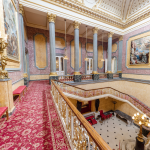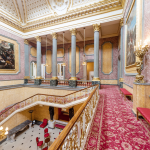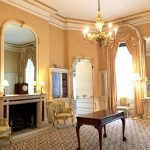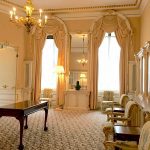The Only Surviving Extravagant Private Palace of Victorian London
I am delighted to have had the opportunity to visit Lancaster House, an historic building in London, a couple of weeks ago. The tour guide, an employee of the Foreign & Commonwealth Office (FCO), took us around and after exploring the stately home I said to him, “Wow! This is a vibrant piece of living history. What a shame that the Crown Estate do not open this magnificent mansion to the public.” He explained that this is the only government building that’s used for conferences and other official functions, and as such it would not be easy to keep its door open to the public. I told him that if Buckingham Palace can manage to open some of the state rooms to the public during the summer months then surely the government can do the same thing when the FCO is resting from its gruelling diplomatic functions.

History of Lancaster House
Formerly known as York House, it was built for Prince Frederick, the Duke of York, and the second son of King George III. The death of Princess Charlotte, the only child of the Prince of Wales who later became King George IV, made the Duke of York the heir apparent in 1817. He then decided to build this large mansion next to Buckingham Palace but sadly, he died before its completion. The house was then purchased by the Marquess of Stafford who later became the first Duke of Sutherland, and was renamed the Stafford House. Although the interior retains some of its rooms including the impressive lobby and staircase (above image), the core was re-built to accommodate the Sutherlands’ large family. The Duke and Duchess have ten children, and more bedrooms were added on the second floor. The Sutherlands occupied the house from 1829 until 1913. The Sutherlands were among the wealthiest families of the Georgian/Victorian era, and Harriet, the Second Duchess, was Queen Victoria’s Lady-in-waiting. Because of the Sutherlands’ connection with the royal family, their love of the arts and politics, and the proximity of their home to Buckingham Palace, Stafford House became the centre of London’s social and political life. After the death of the Duke in 1912, it was purchased by Lord Leverhulme who renamed it ‘Lancaster House’ in honour of his native county of Lancashire. He presented it to the nation in 1913, and it is now owned by the Crown. In the 1950s Lancaster House has been managed by the FCO as a center for government hospitality.
The Grand Hall

Because of it’s massive scale it’s impossible to get a single photograph of the grand hall.
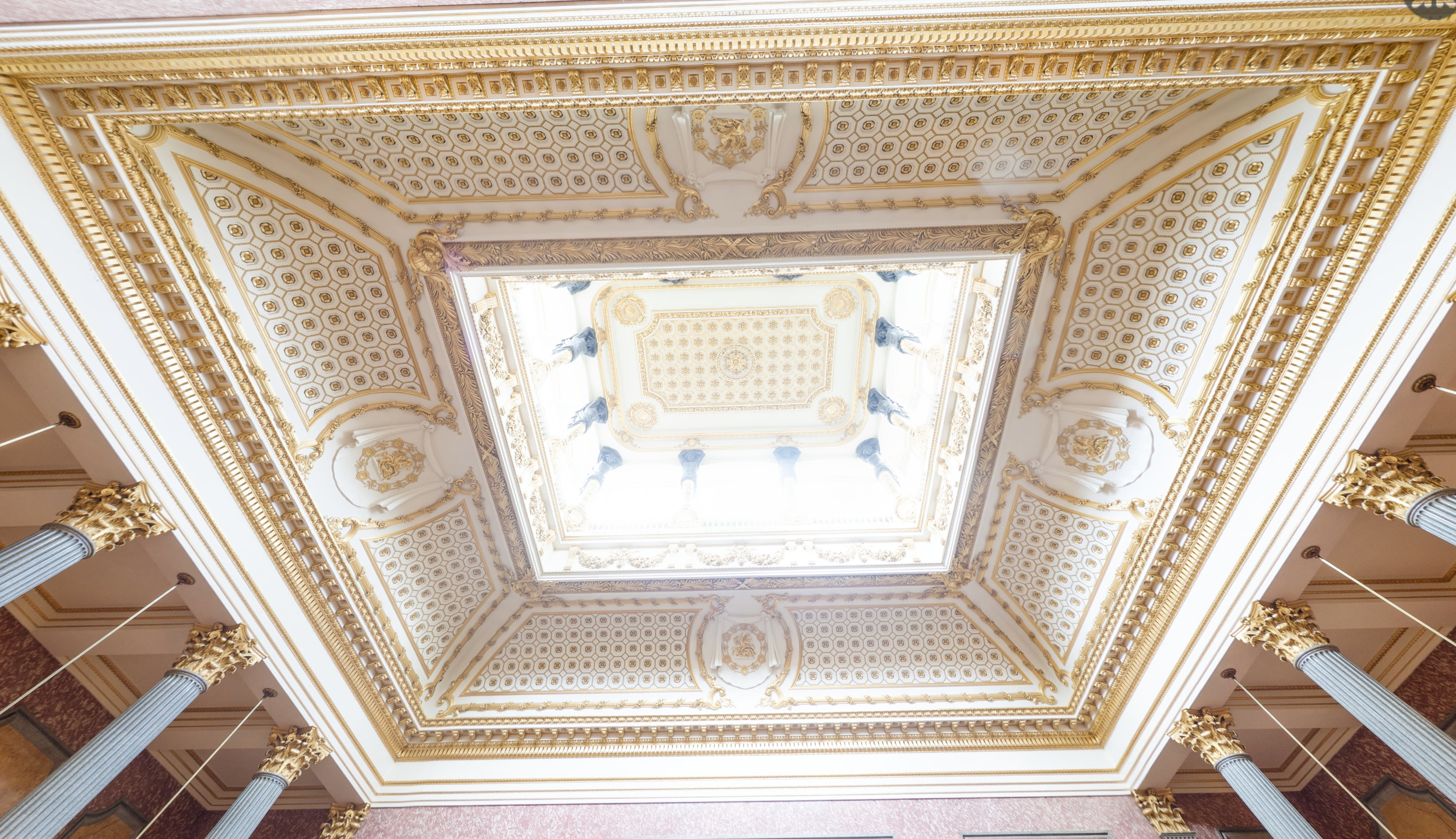 The ceiling has a large skylight with black atlantes between windows and it was hard to capture the details. The photos just don’t do it any justice.
The ceiling has a large skylight with black atlantes between windows and it was hard to capture the details. The photos just don’t do it any justice.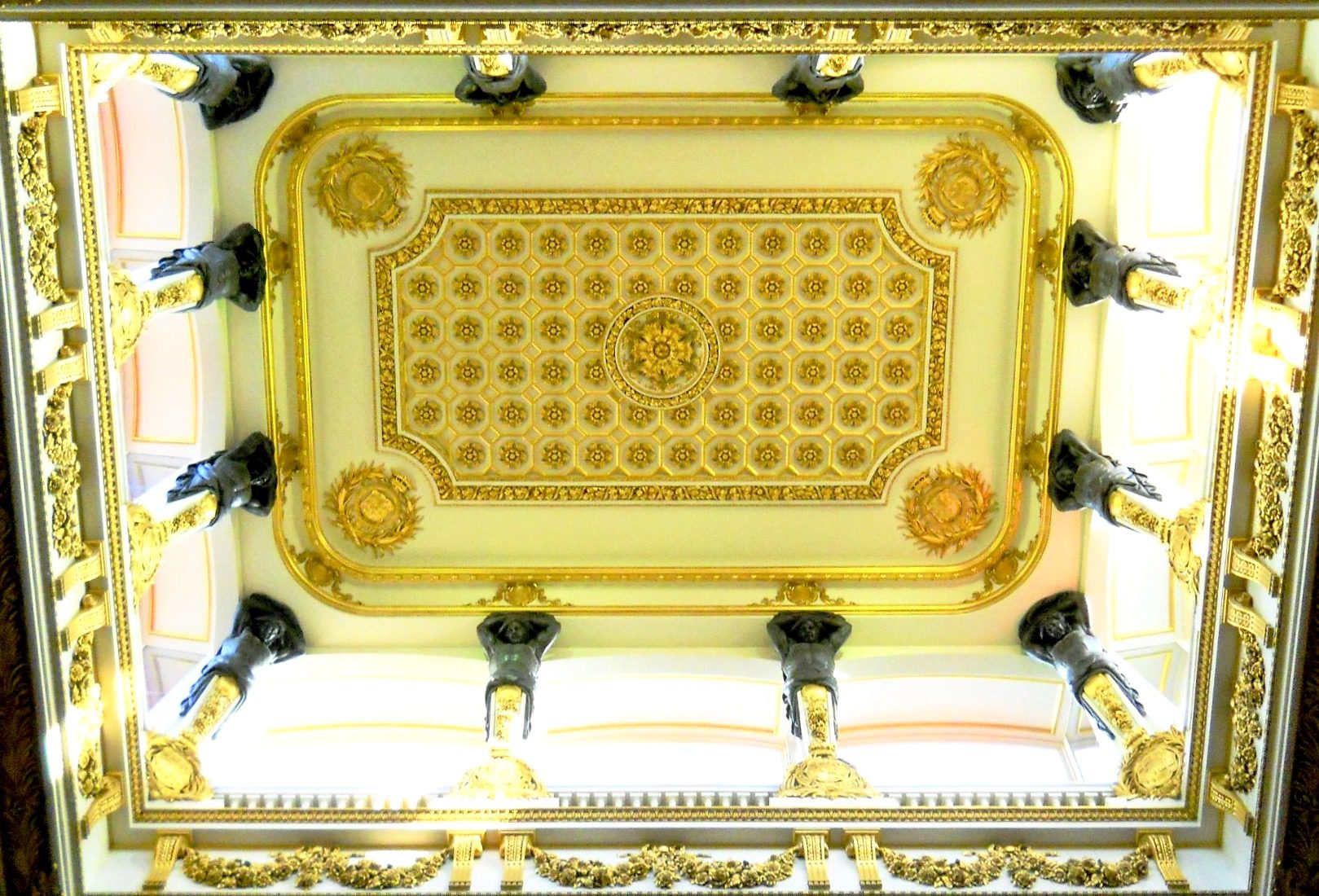 The natural skylight and the glowing colour of the walls are the work of Sir Charles Barry (an English architect best known for his role in the rebuilding of the Palace of Westminster/Houses of Parliament) who used scagliola (a coloured paste containing mineral fragments) to replicate marble on the walls — the weight of the marble made it structurally unsuitable, and so even the granite-like pillars are made of hallow timber covered with scagliola – strong but light.
The natural skylight and the glowing colour of the walls are the work of Sir Charles Barry (an English architect best known for his role in the rebuilding of the Palace of Westminster/Houses of Parliament) who used scagliola (a coloured paste containing mineral fragments) to replicate marble on the walls — the weight of the marble made it structurally unsuitable, and so even the granite-like pillars are made of hallow timber covered with scagliola – strong but light.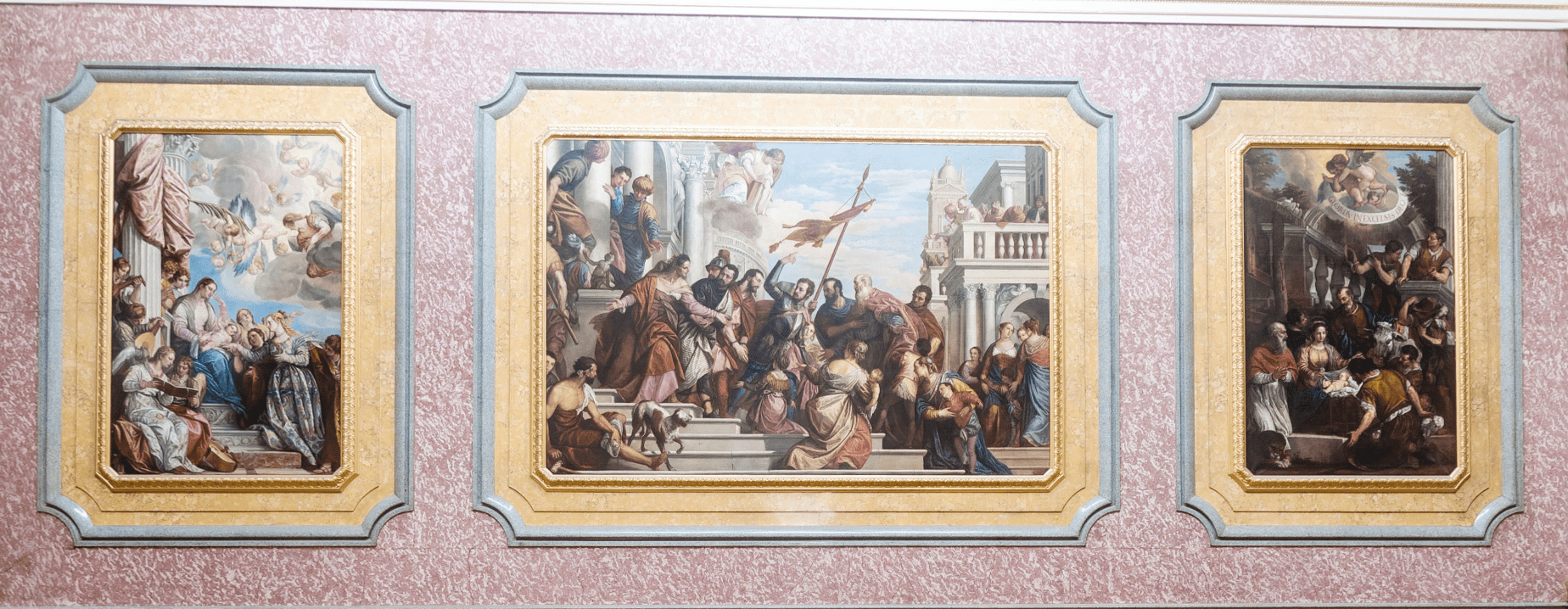 The paintings hanging above the sweeping staircase is mainly of early martyrdom and are copies of famous paintings by Paolo Veronese (an Italian painter of the Renaissance era), and presumably chosen by the Sutherlands for decorative effect rather than its religious significance.
The paintings hanging above the sweeping staircase is mainly of early martyrdom and are copies of famous paintings by Paolo Veronese (an Italian painter of the Renaissance era), and presumably chosen by the Sutherlands for decorative effect rather than its religious significance.The Green Room
 The chimneypiece is stone-carved with figures of Summer and Winter, said to represent two of the Duchess’s ten children.
The chimneypiece is stone-carved with figures of Summer and Winter, said to represent two of the Duchess’s ten children. The ceiling painting in the Green Room is of the solar system that features all the signs of the zodiac.
The ceiling painting in the Green Room is of the solar system that features all the signs of the zodiac. This room became the second Duchess of Sutherland’s boudoir. The chair facing the window is said to be the spot where the Duchess would sit down and watch Queen Victoria leave Buckingham Palace to come over for afternoon tea. Queen Victoria apparently made a remark to the Duchess of Sutherland, “My dear, I have come from my house to your palace.” when she first visited Stafford House. This room has the original furnishings dating from the 1800s.
This room became the second Duchess of Sutherland’s boudoir. The chair facing the window is said to be the spot where the Duchess would sit down and watch Queen Victoria leave Buckingham Palace to come over for afternoon tea. Queen Victoria apparently made a remark to the Duchess of Sutherland, “My dear, I have come from my house to your palace.” when she first visited Stafford House. This room has the original furnishings dating from the 1800s.
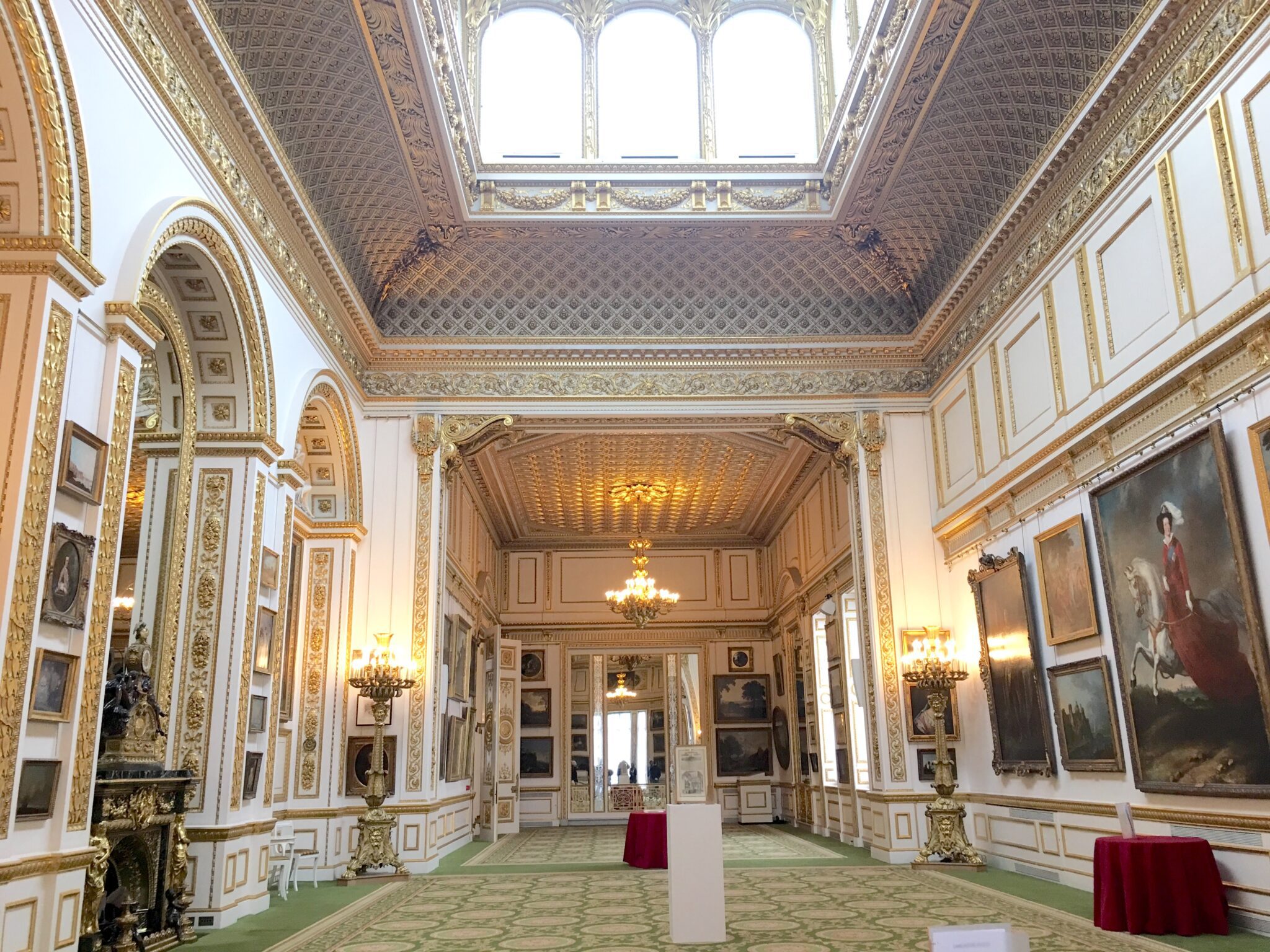 This enormous room (over 50 meters long) occupies the whole east side of the house and is divided into three sections with 18 windows between which are all gilded, and the walls are lined with paintings and other art collections. This is where the dinner hosted by PM Winston Churchill took place after the coronation of the new Queen Elizabeth II.
This enormous room (over 50 meters long) occupies the whole east side of the house and is divided into three sections with 18 windows between which are all gilded, and the walls are lined with paintings and other art collections. This is where the dinner hosted by PM Winston Churchill took place after the coronation of the new Queen Elizabeth II.
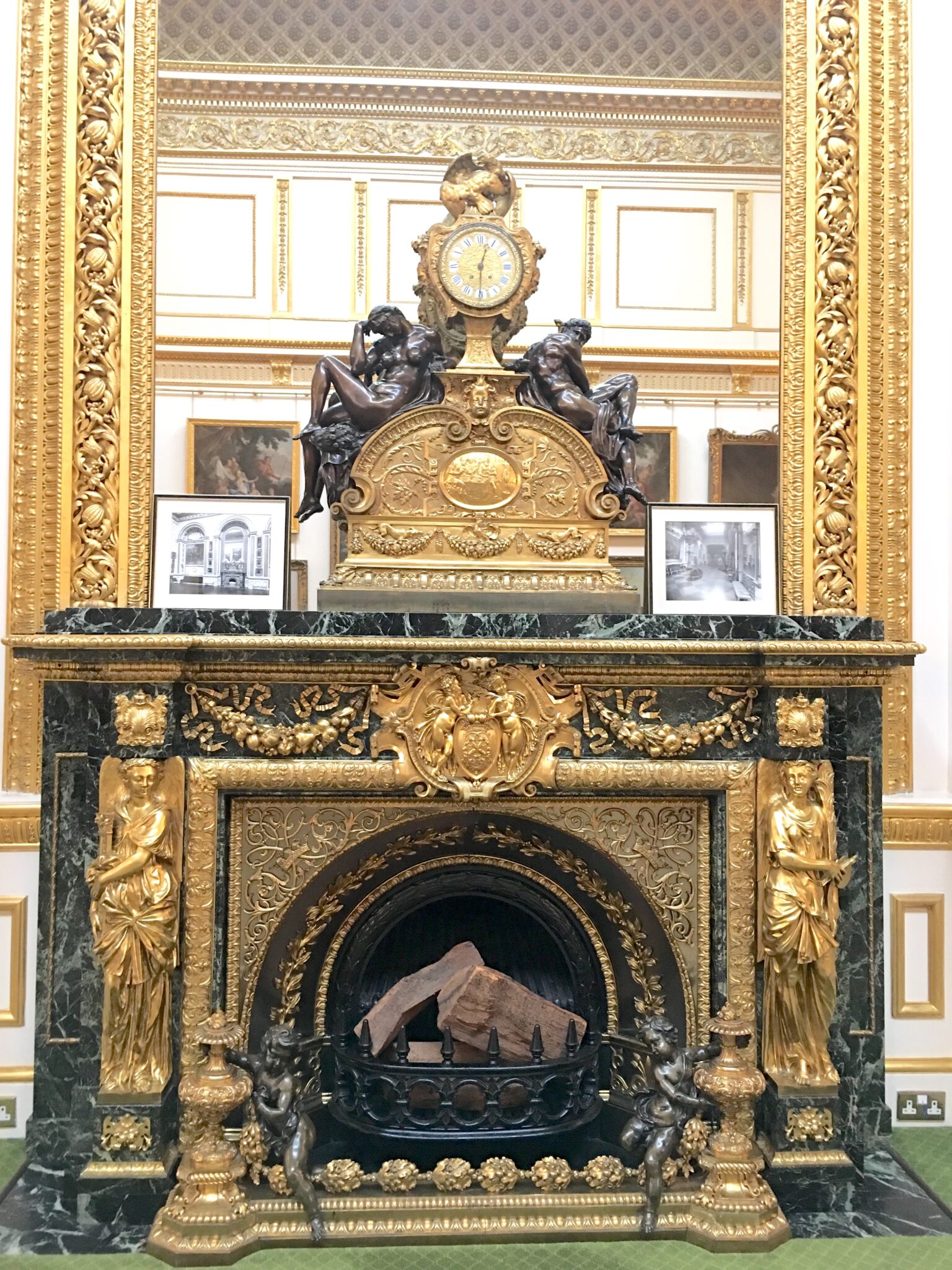 As this large room is divided into three sections, there’s also three different ceilings but all connected with one another — it has a great skylight similar to the staircase hall and very luxurious.
As this large room is divided into three sections, there’s also three different ceilings but all connected with one another — it has a great skylight similar to the staircase hall and very luxurious.
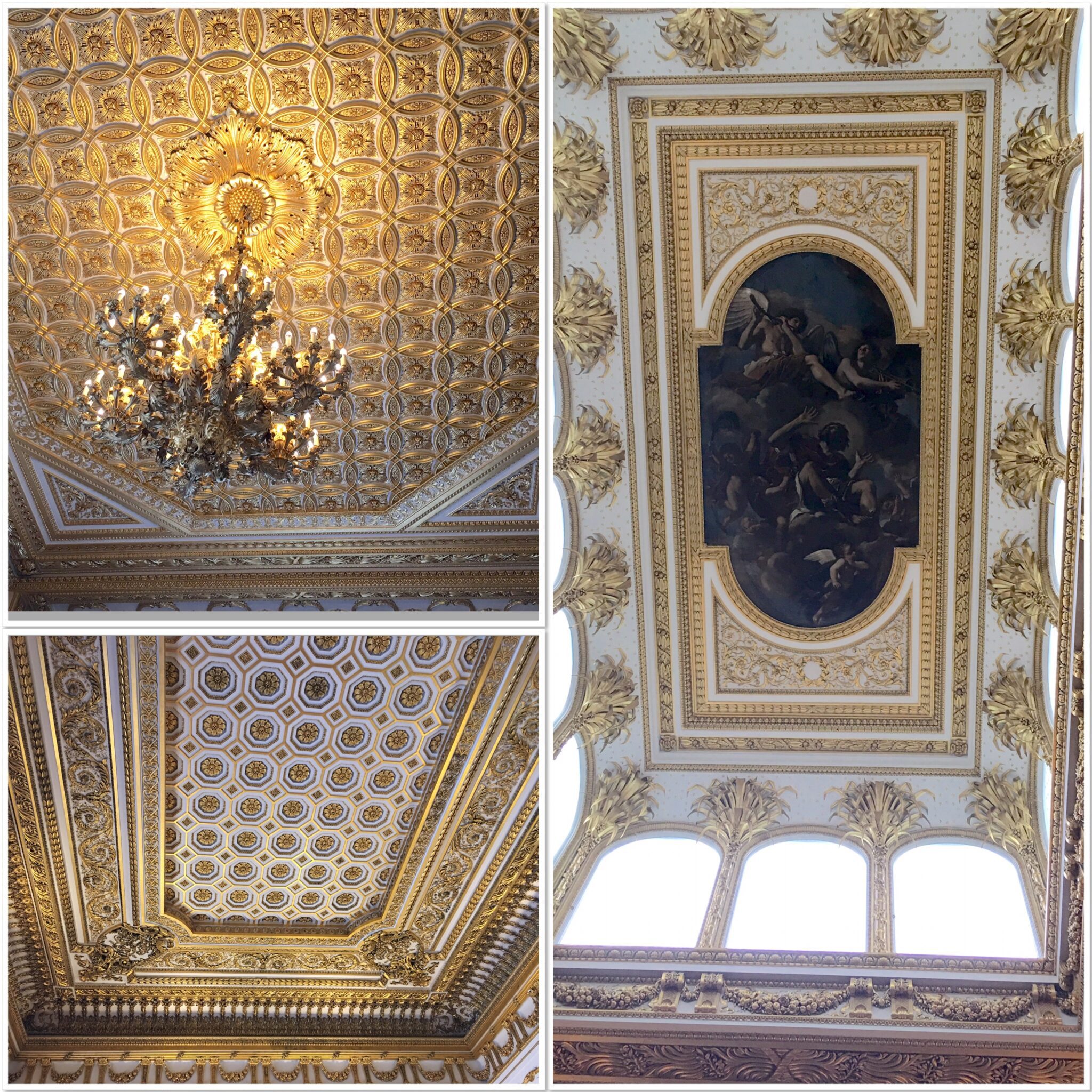
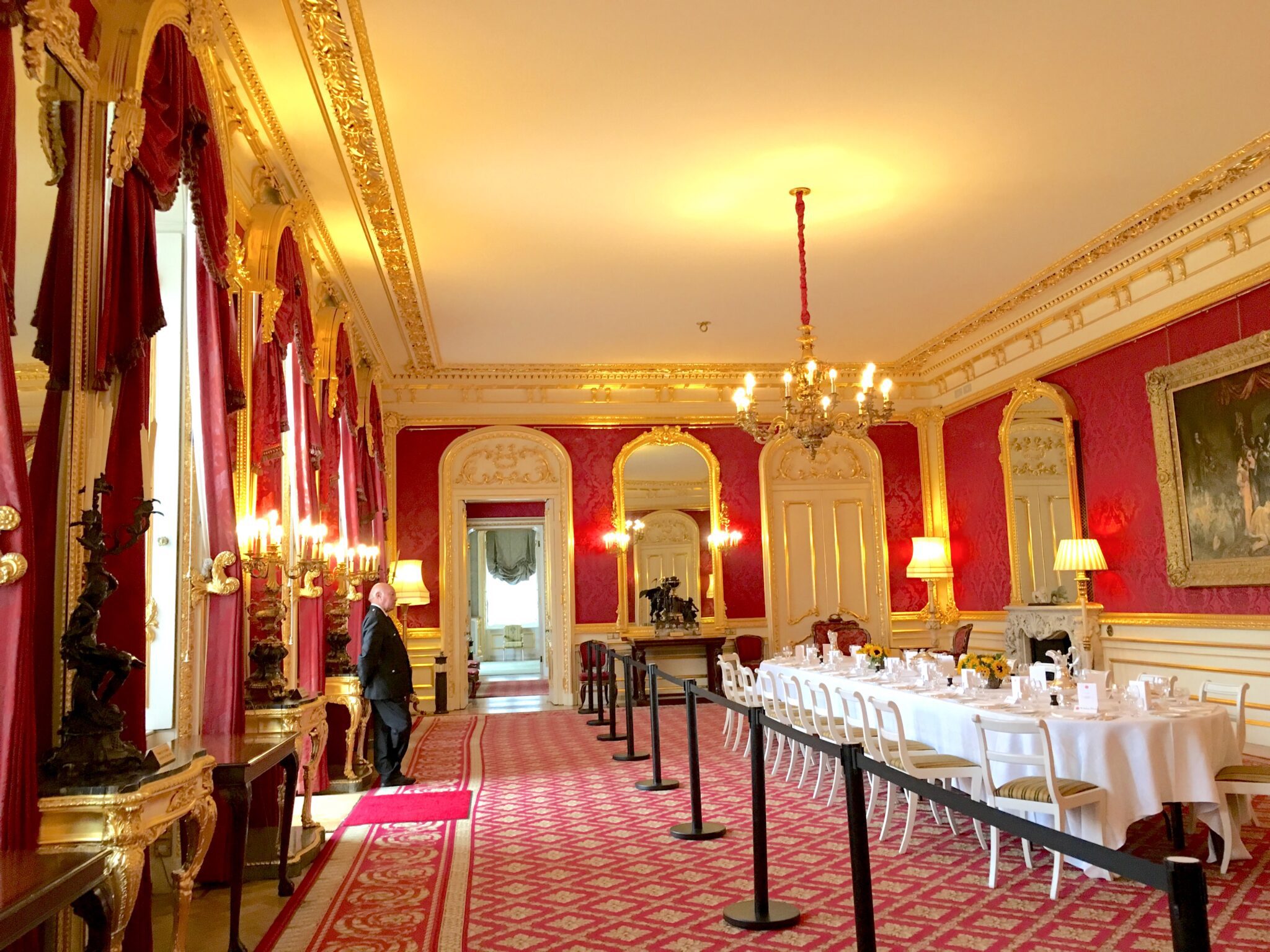 This room is used mainly for ministerial lunches, and can seat up to 67 people. This is where the dinner hosted by Prime Minister Theresa May for Aung San Suu Kyi, the Burmese incumbent State Counsellor and Leader of the National League for Democracy, took place when she visited the UK on the third week of September.
This room is used mainly for ministerial lunches, and can seat up to 67 people. This is where the dinner hosted by Prime Minister Theresa May for Aung San Suu Kyi, the Burmese incumbent State Counsellor and Leader of the National League for Democracy, took place when she visited the UK on the third week of September.
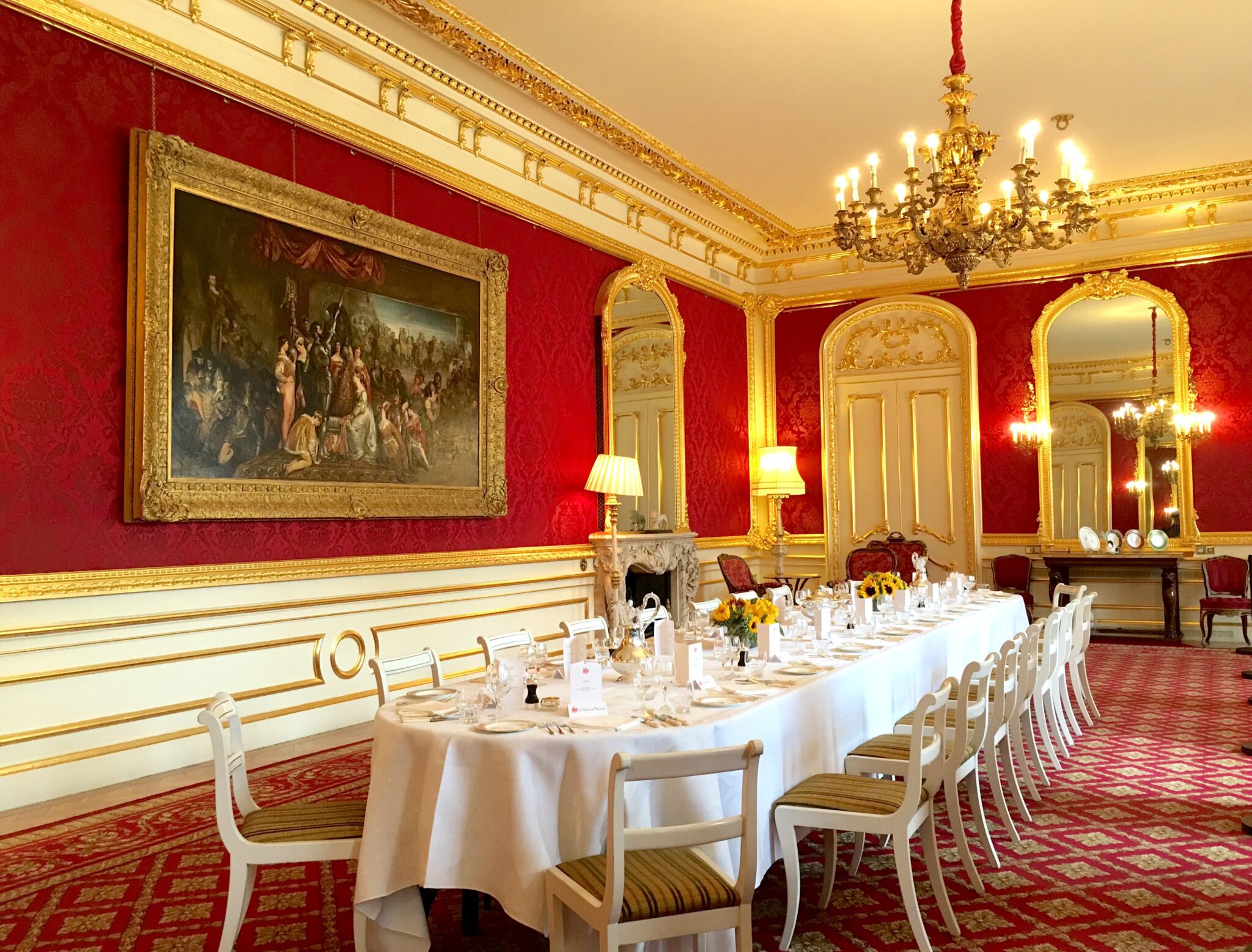 The State Dining Room was once the Sutherlands’ drawing room, and it commands a very impressive view across the Mall and St James’s Park. The clock on the table against the west wall is said to have belonged to Napoleon Bonaparte.
The State Dining Room was once the Sutherlands’ drawing room, and it commands a very impressive view across the Mall and St James’s Park. The clock on the table against the west wall is said to have belonged to Napoleon Bonaparte.
 These tableware are just a few of the china collections that are currently used for official functions.
These tableware are just a few of the china collections that are currently used for official functions.
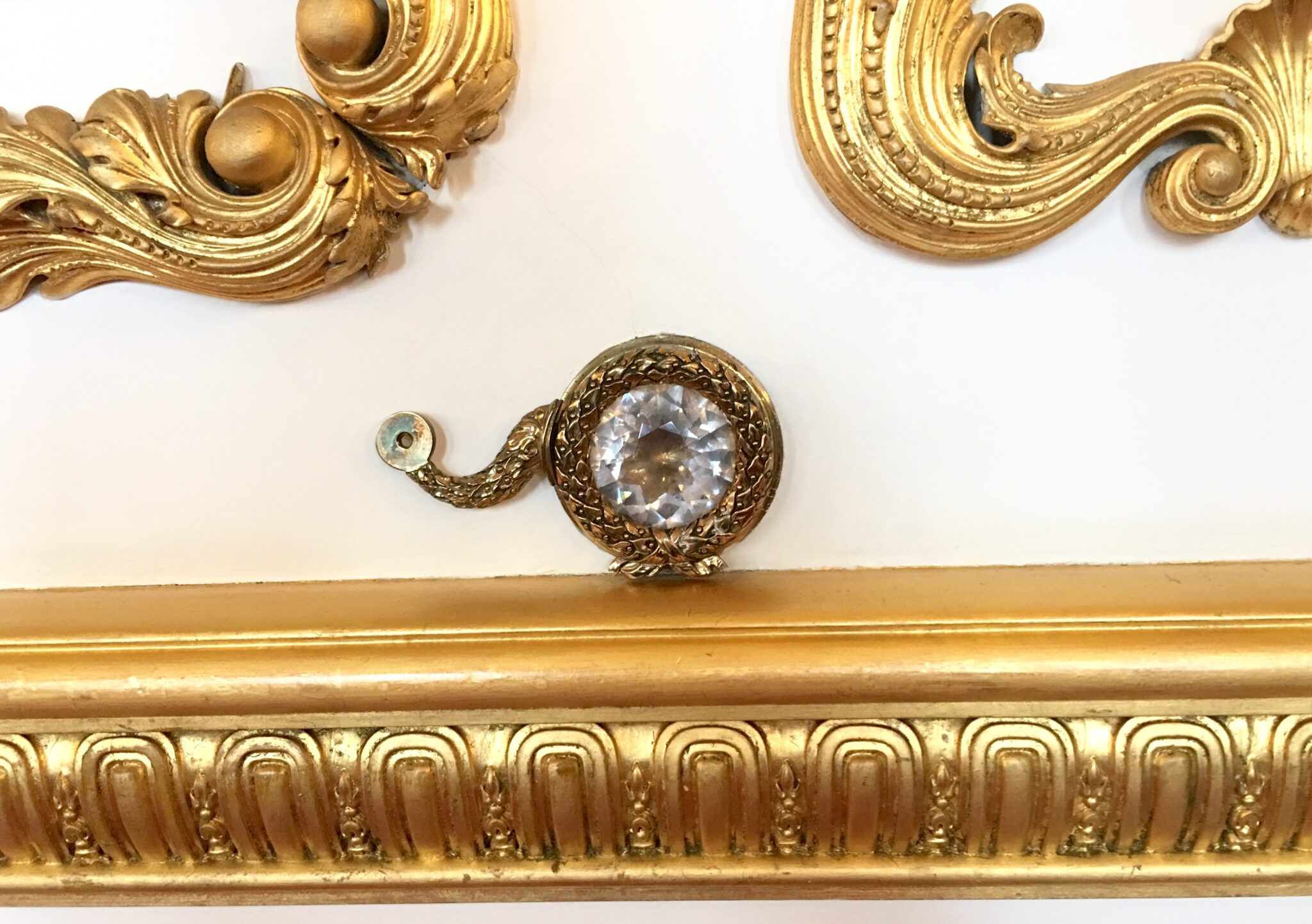 Above one of the fireplaces in the dining room is this tiny little thing which I noticed and so I asked the tour guide about it. I was told that it’s one of the original ‘bell pull’ around the house used by the Sutherlands to get the attention of their servants when they needed something.
Above one of the fireplaces in the dining room is this tiny little thing which I noticed and so I asked the tour guide about it. I was told that it’s one of the original ‘bell pull’ around the house used by the Sutherlands to get the attention of their servants when they needed something.
 The Music Room has windows opening onto a balcony overlooking Stable Yard and is flanked by Corinthian columns (currently the entrance to the building). The splendour of the room reflects the Sutherland’s long association with music. The leading musicians during the nineteenth century often came to London and appeared at one of the Sutherland’s evening parties. One of them was Frederic Chopin who played here for Queen Victoria and Prince Albert in 1848. Lancaster House history book has a record that Chopin gave seven guineas’ worth of lessons to the young Lady Constance, one of the Sutherland’s daughters.
The Music Room has windows opening onto a balcony overlooking Stable Yard and is flanked by Corinthian columns (currently the entrance to the building). The splendour of the room reflects the Sutherland’s long association with music. The leading musicians during the nineteenth century often came to London and appeared at one of the Sutherland’s evening parties. One of them was Frederic Chopin who played here for Queen Victoria and Prince Albert in 1848. Lancaster House history book has a record that Chopin gave seven guineas’ worth of lessons to the young Lady Constance, one of the Sutherland’s daughters.
 The Coat of Arms of the Sutherlands is incorporated into the design of the ceiling in this room.
The Coat of Arms of the Sutherlands is incorporated into the design of the ceiling in this room.
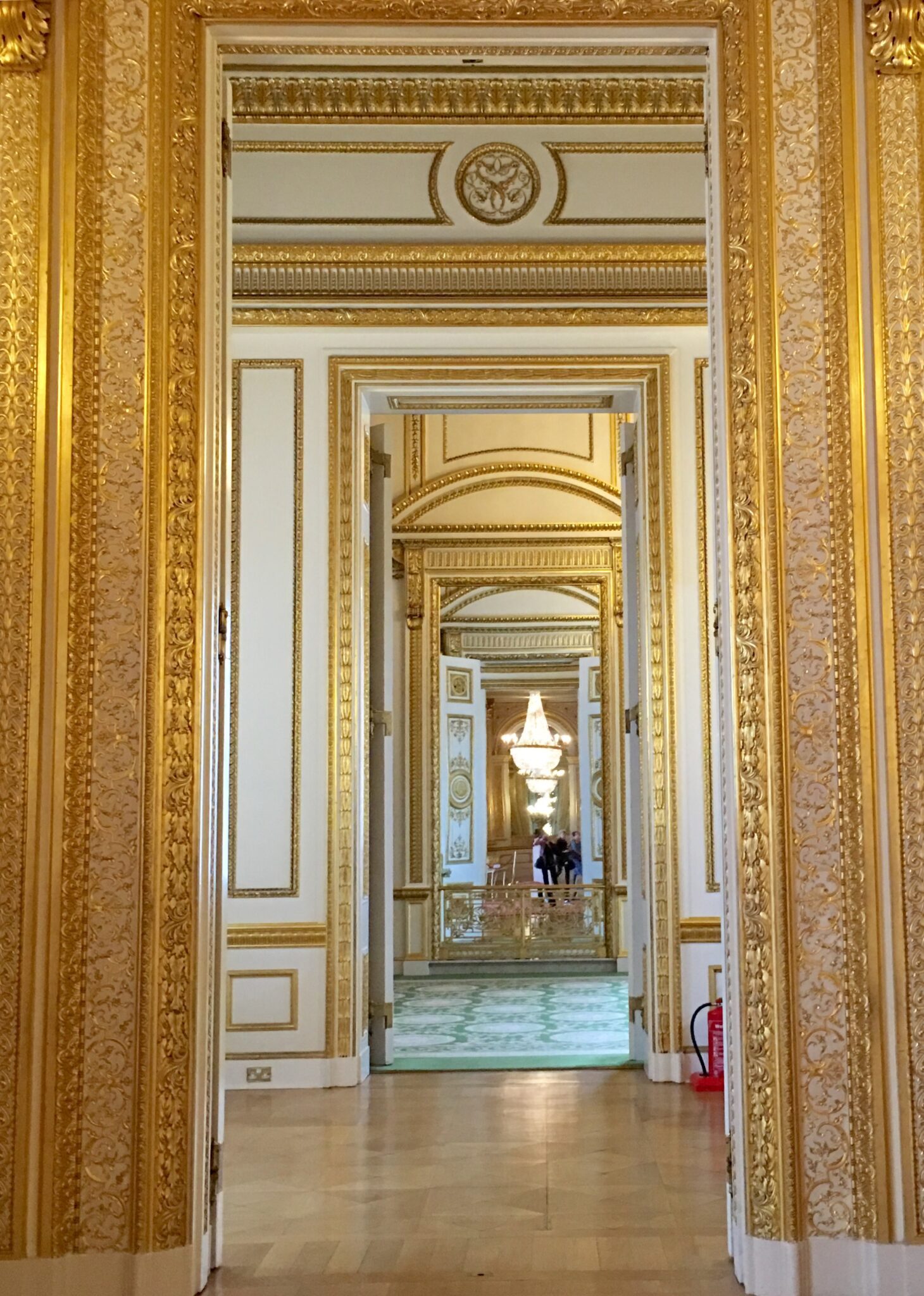
The Gold Room
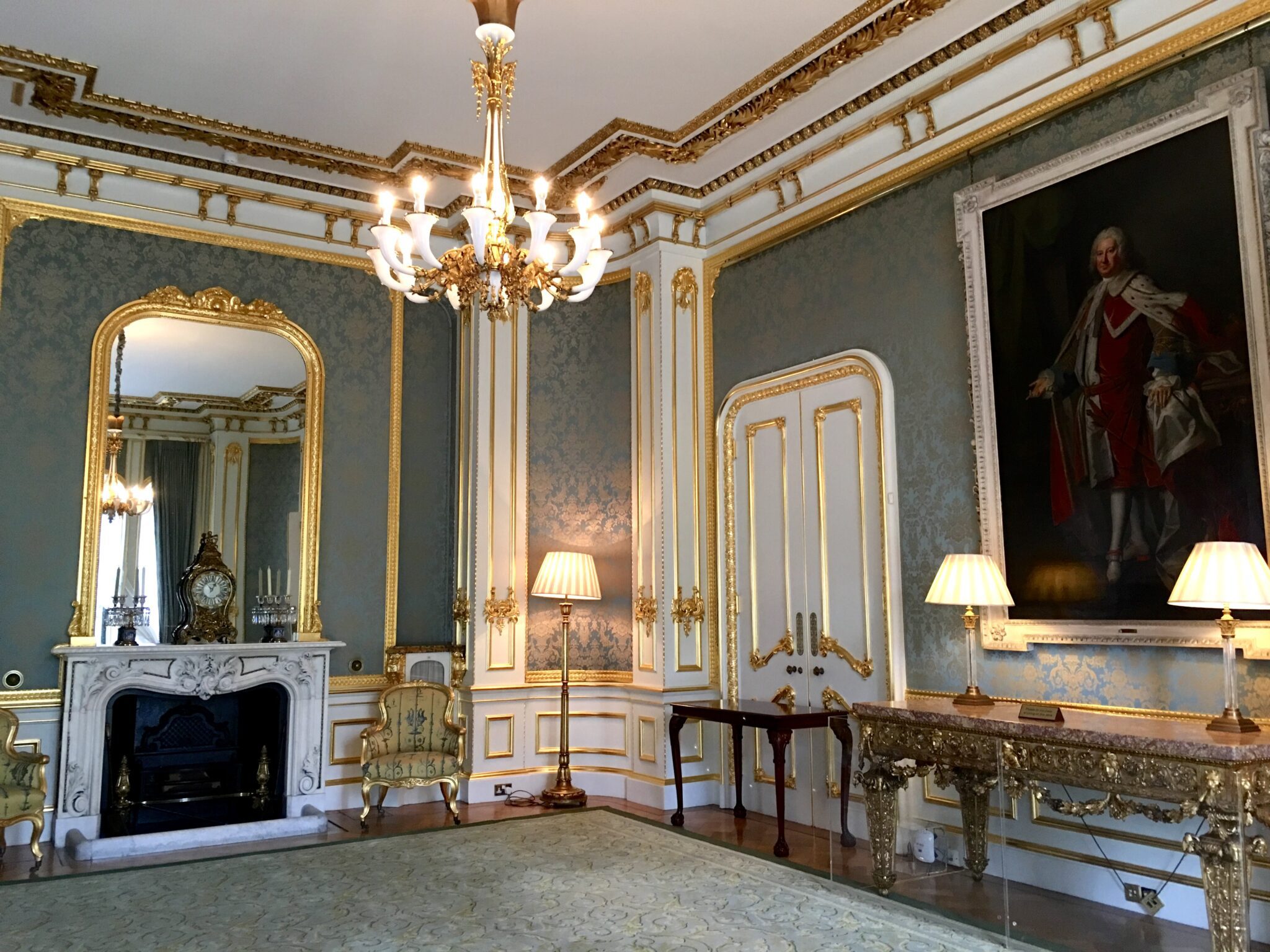 The Gold Room housed the famous Cheapside hoard of Elizabethan treasure, and it also has the original chandelier and antique clock by Thuillier of Paris. This room still retains more than an echo of the wealth and splendour of the Victorian era. It was used as a private office by the Irish Foreign Minister during the 1998 Northern Ireland Peace Talks and was also used as an office by US President Obama when he visited the UK a couple of years ago.
The Gold Room housed the famous Cheapside hoard of Elizabethan treasure, and it also has the original chandelier and antique clock by Thuillier of Paris. This room still retains more than an echo of the wealth and splendour of the Victorian era. It was used as a private office by the Irish Foreign Minister during the 1998 Northern Ireland Peace Talks and was also used as an office by US President Obama when he visited the UK a couple of years ago.
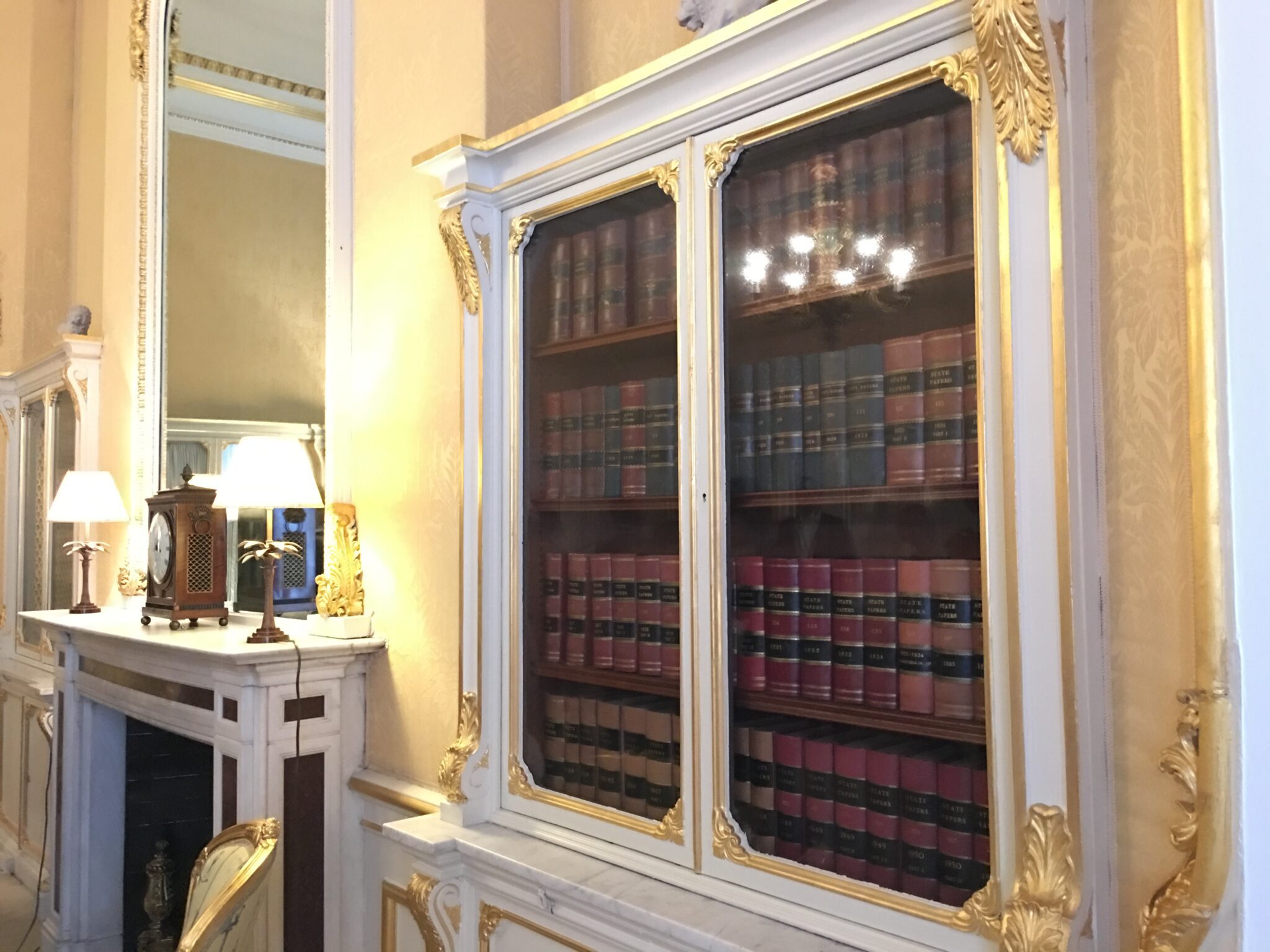 This is currently used for small meetings and the room is still lined with book cases around filled with the former owner’s collections.
This is currently used for small meetings and the room is still lined with book cases around filled with the former owner’s collections.
The Red Room
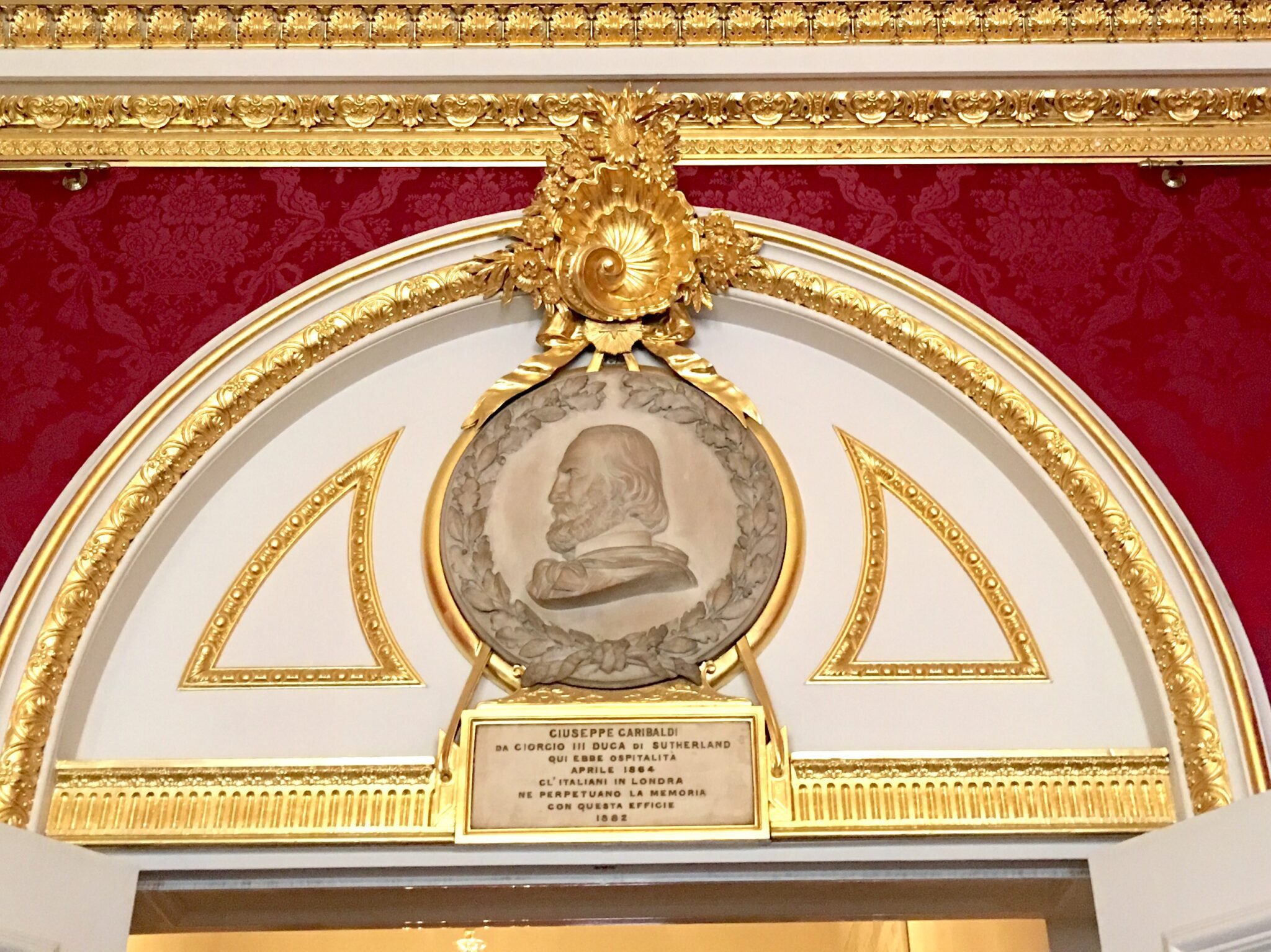 During the time of the Sutherlands, the house attracted many distinguished guests, including the Earl of Shaftesbury, well-known as a factory reformer, and Italian revolutionary leader Giuseppe Garibald — his stone carved image with inscription is on top of the door.
During the time of the Sutherlands, the house attracted many distinguished guests, including the Earl of Shaftesbury, well-known as a factory reformer, and Italian revolutionary leader Giuseppe Garibald — his stone carved image with inscription is on top of the door.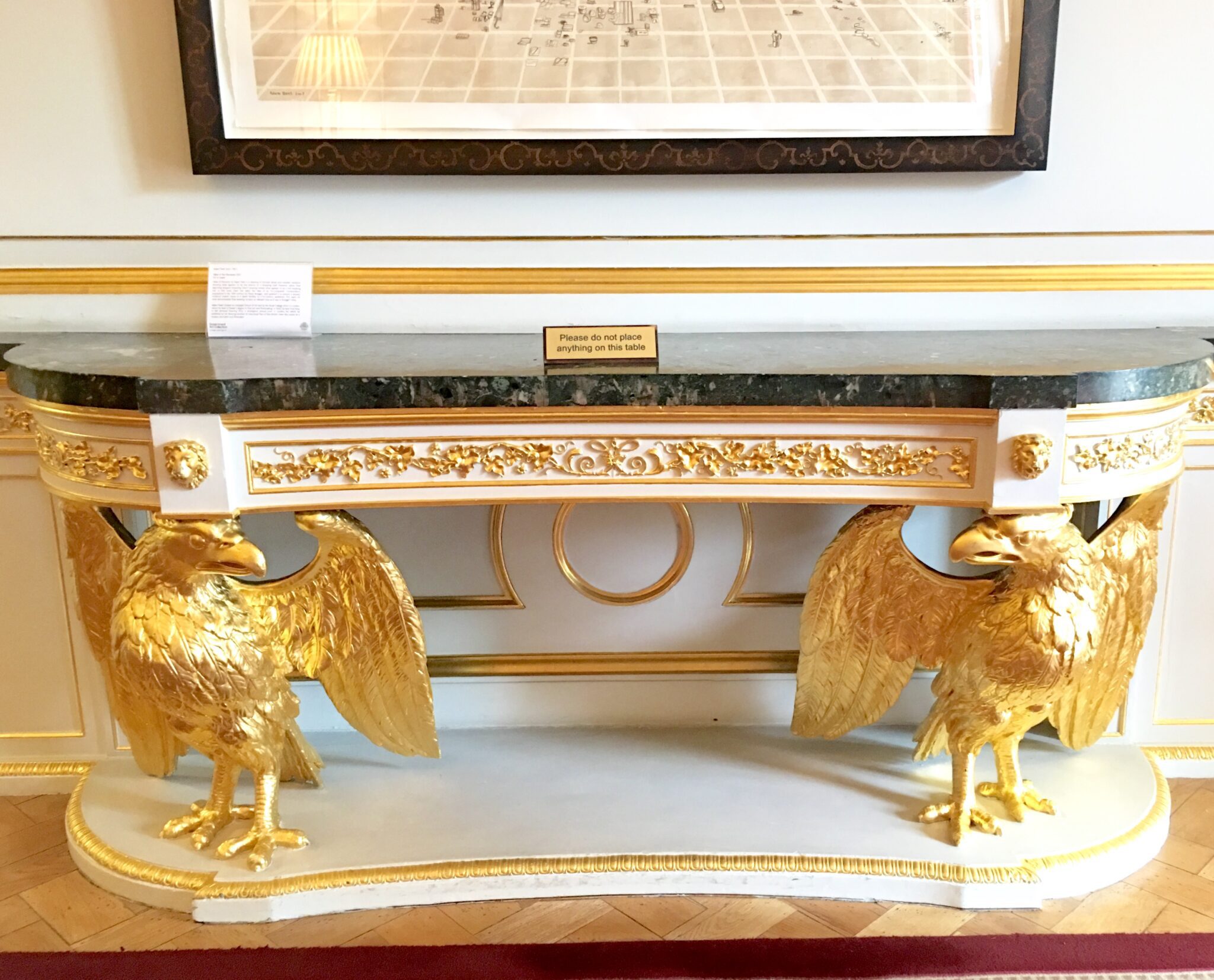 Apparently, all American diplomats who visited the house are always captivated by this table with eagles. This is the favourite room of former US Secretary of State Condoleeza Rice, and our tour guide mentioned that she always requested to use this room as her office when visiting London during her term in the US State Department.
Apparently, all American diplomats who visited the house are always captivated by this table with eagles. This is the favourite room of former US Secretary of State Condoleeza Rice, and our tour guide mentioned that she always requested to use this room as her office when visiting London during her term in the US State Department.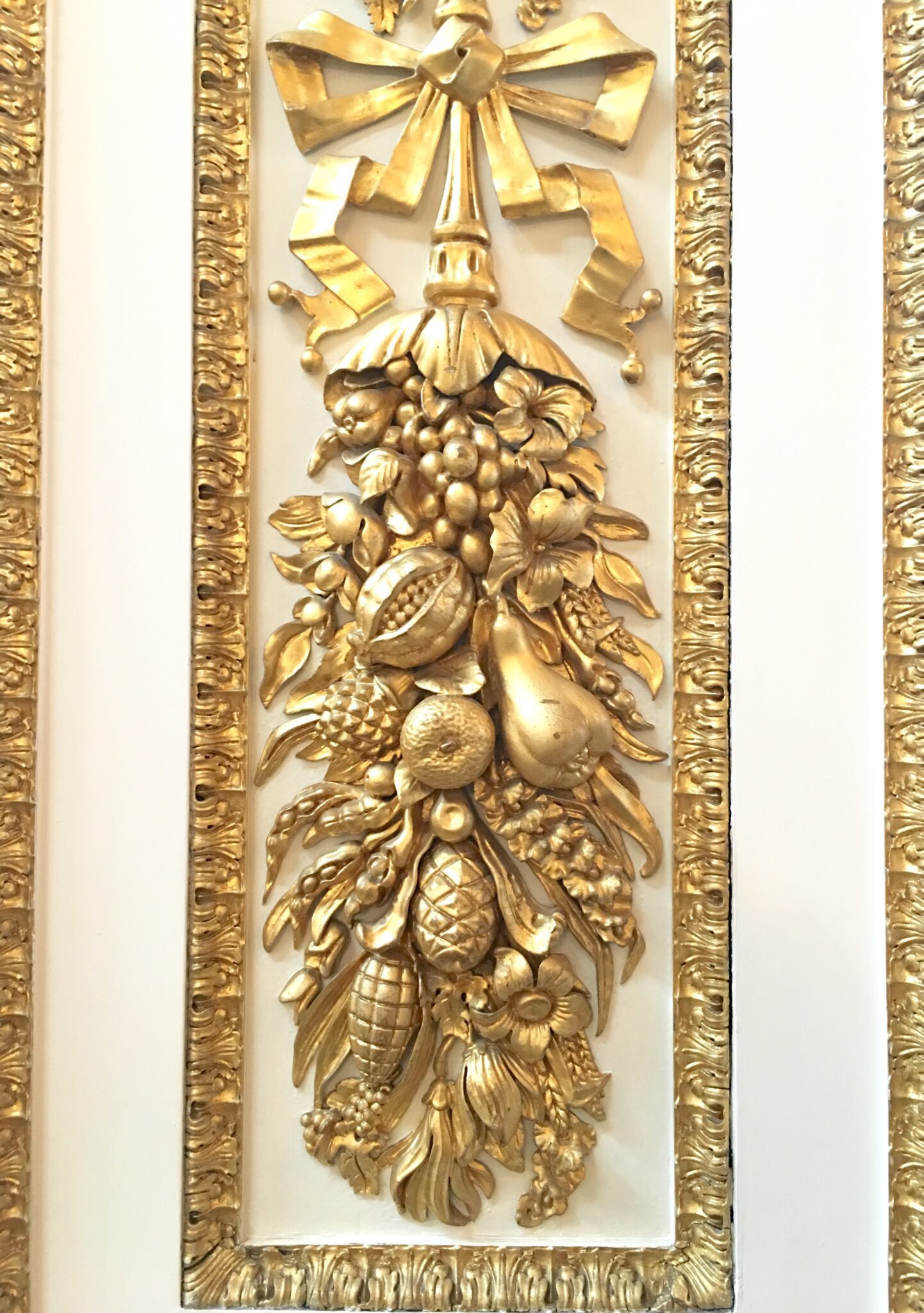 The opulent interiors of Lancaster House is clearly seen everywhere. Even the wood-carvings on the walls are gilded. It has a large collection of paintings by famous artists and there’s astonishing ornaments that adorn the rooms that were left behind by its former owners, the illustrious Sutherland family.
The opulent interiors of Lancaster House is clearly seen everywhere. Even the wood-carvings on the walls are gilded. It has a large collection of paintings by famous artists and there’s astonishing ornaments that adorn the rooms that were left behind by its former owners, the illustrious Sutherland family.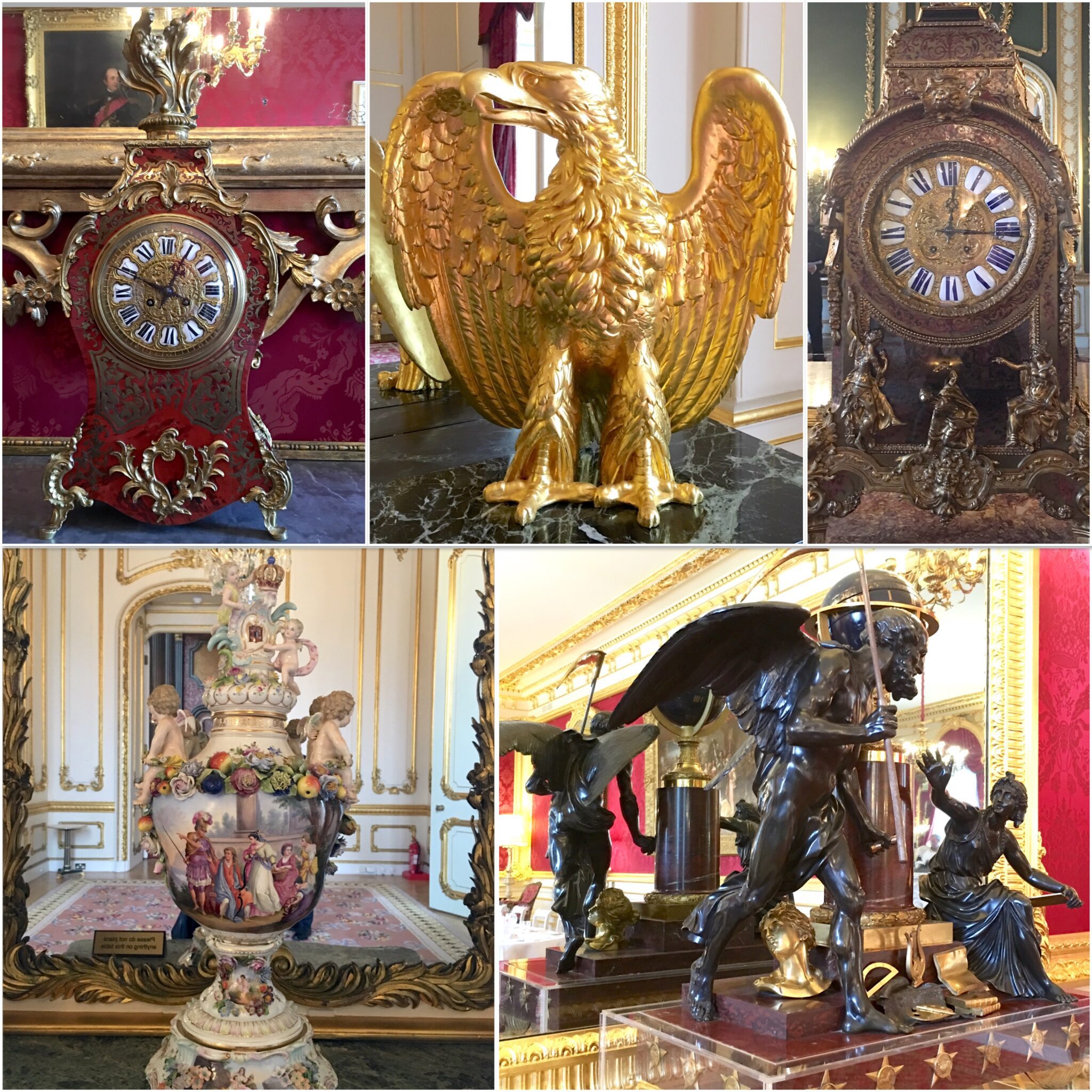
It is a huge three-storey house plus a basement (servant’s quarters), and aside from the large rooms there’s anterooms — all lavishly decorated and great reminder of the grandeur of the old Victorian and Edwardian era. I took loads of pictures but only selected a few I’ve posted here.
Popular Culture
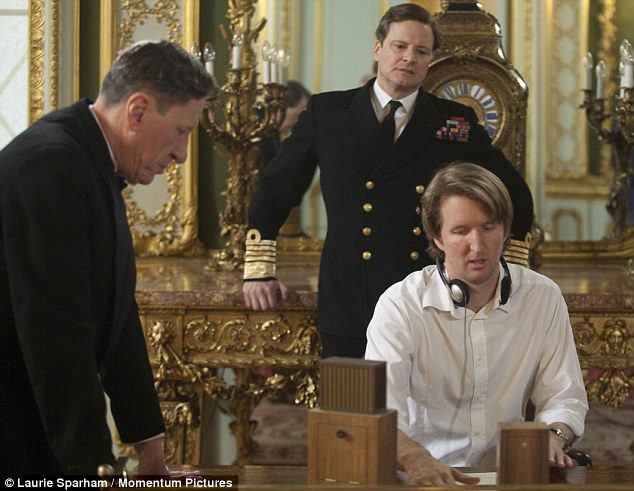
Lancaster House is the main location of the hit film “The King’s Speech” and the image below is the long corridors used in the scene where King George VI (played by Colin Firth) was walking just before he gave the war speech.
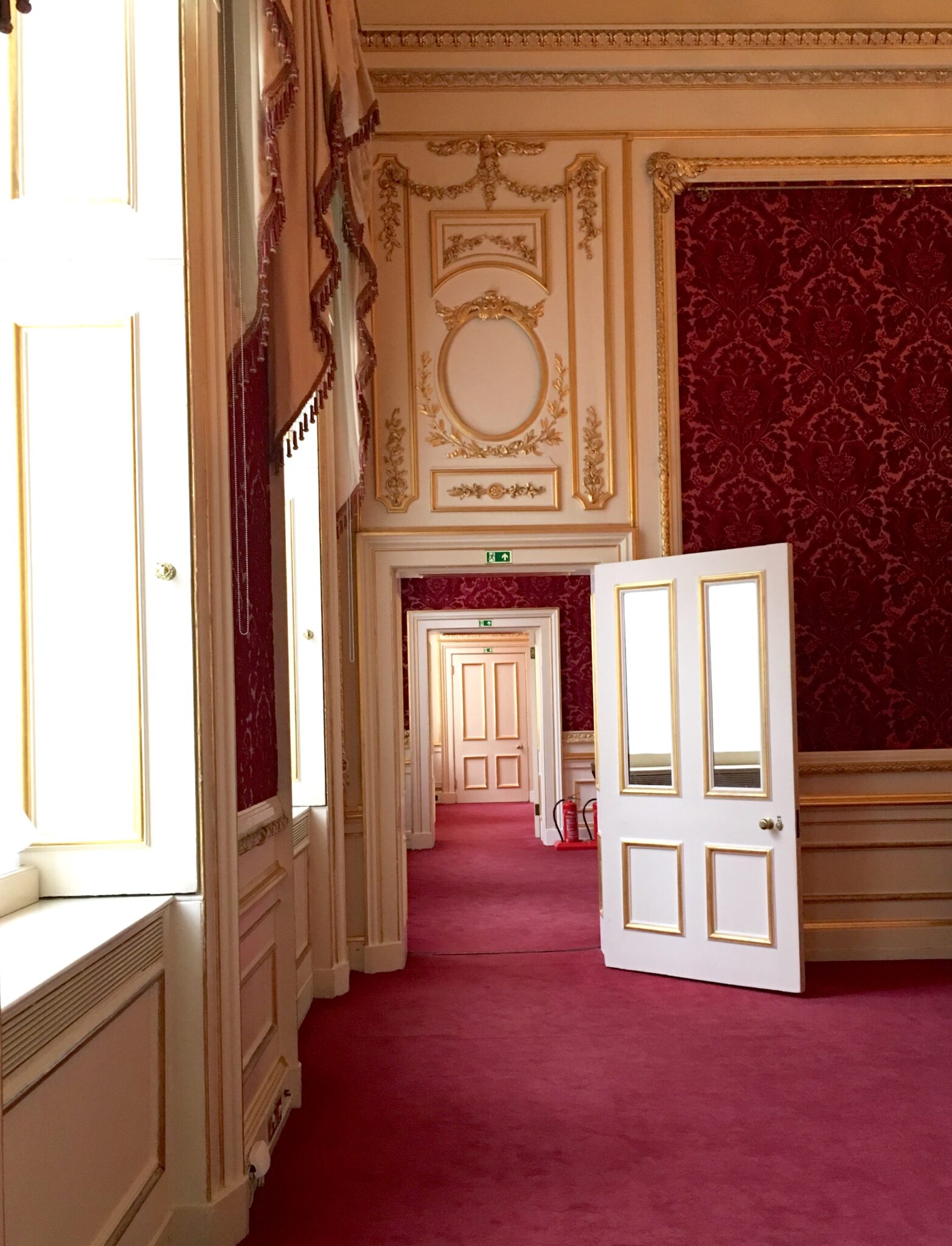 The house was also used for other popular films like The Queen (played by Helen Mirren) and many others. It is often used in films or tv series as a substitute for Buckingham Palace. Lancaster House is certainly full of history, and the last unaltered private palace from the heyday of Victorian London. This house is owned by the Crown Estate, and as mentioned in the beginning of this post, it really is a shame that this ornate building is not open to the public except on rare occasions when FCO would invite a few people for a tour.
The house was also used for other popular films like The Queen (played by Helen Mirren) and many others. It is often used in films or tv series as a substitute for Buckingham Palace. Lancaster House is certainly full of history, and the last unaltered private palace from the heyday of Victorian London. This house is owned by the Crown Estate, and as mentioned in the beginning of this post, it really is a shame that this ornate building is not open to the public except on rare occasions when FCO would invite a few people for a tour.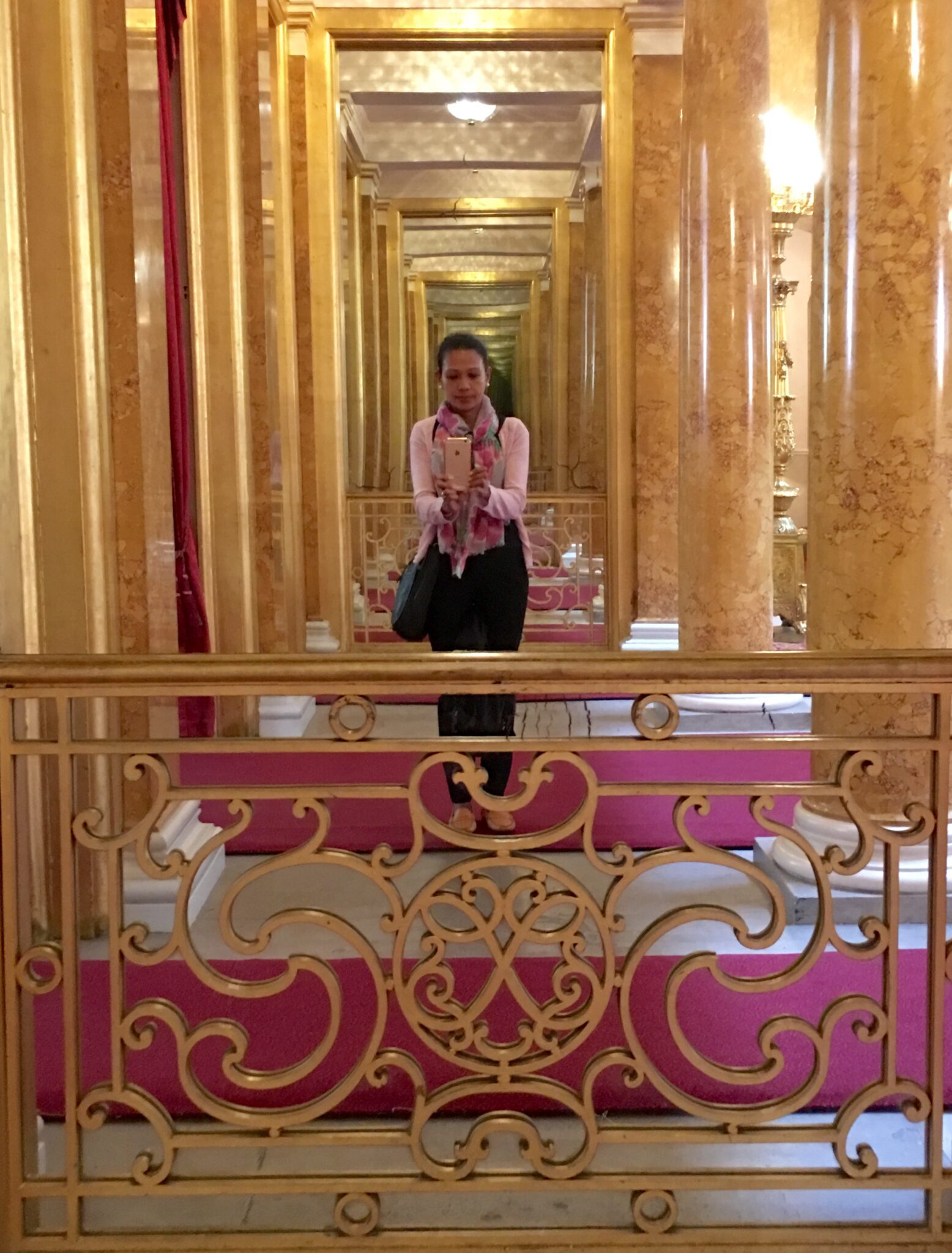 After the tour, I went back to the Grand Lobby to take a selfie. 🙂 I was too shy to ask someone in the group to take a picture of myself so I thought, “I may never have the opportunity to visit this house again so a selfie is probably a good idea to show that I have once visited this magnificent London mansion.” 🙂
After the tour, I went back to the Grand Lobby to take a selfie. 🙂 I was too shy to ask someone in the group to take a picture of myself so I thought, “I may never have the opportunity to visit this house again so a selfie is probably a good idea to show that I have once visited this magnificent London mansion.” 🙂
